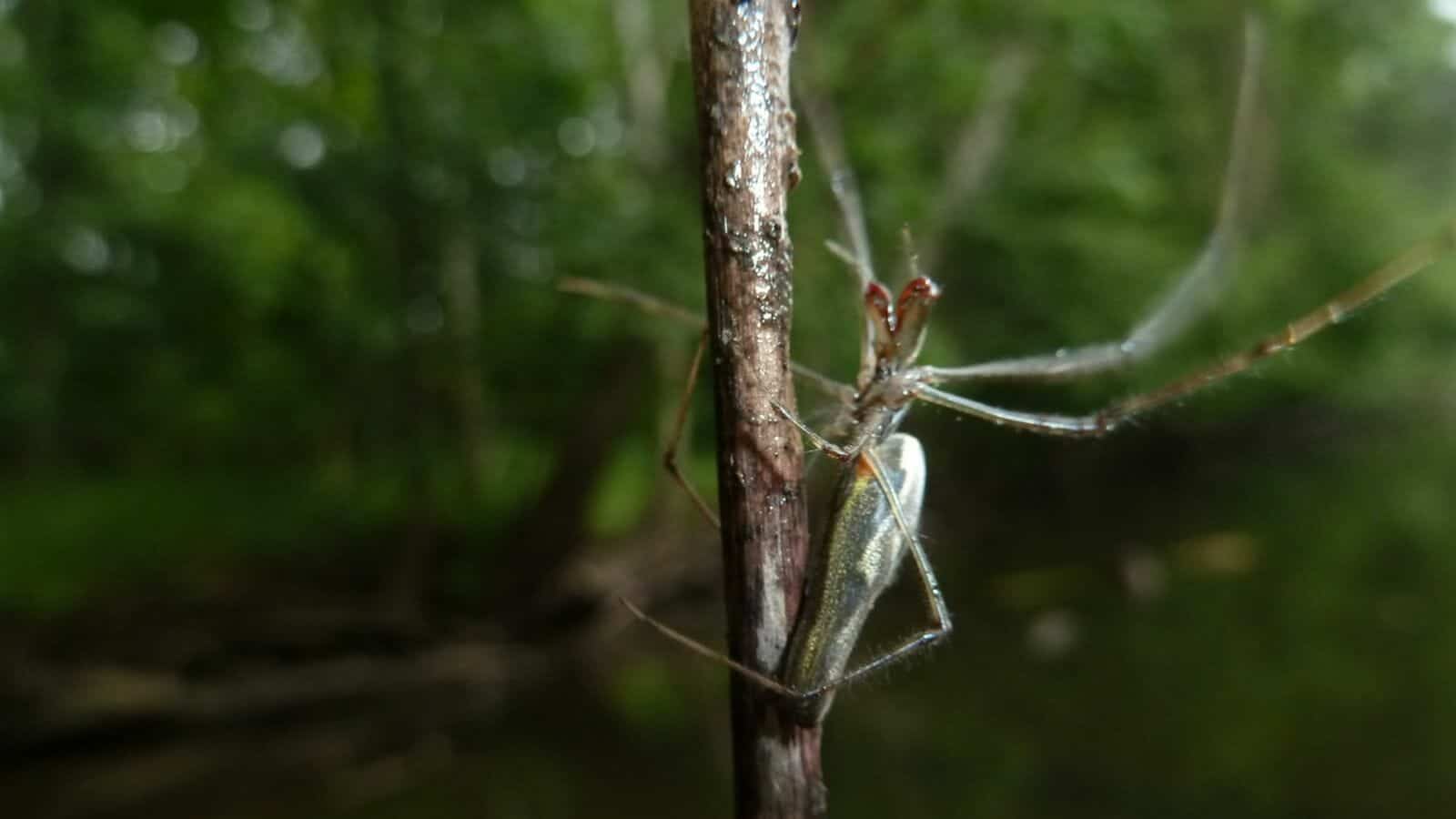

Spiders, such as the one pictured here, are found in riparian environments all over the world. They build their webs over streams and catch aquatic insects as they emerge from the water. Pharmaceuticals in the insects spread to the spiders and other organisms on land. Photo: Stephen Hamilton
Medicines do an excellent job of increasing the quality of life for humans around the world, but the drugs don’t stay with us forever, and are eventually flushed out into our wastewater. Now, new research suggests that not only are a staggering range of pharmaceutical products getting into the environment and accumulating in animals, they’re ascending up the food chain.
The problem of pharmaceutical pollution is largely the result of wastewater treatment facilities being unable to scrub out a rapidly-increasing concentration and diversity of drugs flooding into sewage lines. The still-very-functional active ingredients then get out into nature via runoff or wastewater effluents. Scientists are only now beginning to understand the scale of ecological contamination, and a study published today in Nature Communications adds a sobering pixel to picture. Over 60 different pharmaceutical compounds have been detected in the bodies of Australian aquatic insects, which are then passed on to their pider predators.
The team of researchers—based in the U.S., Australia, and Sweden—sampled nearly 200 aquatic insects from six different streams near Melbourne, Australia, testing their tissues for the presence of 98 different compounds. Those compounds included many from commonly-used painkillers like aspirin and ibuprofen, antibiotics, and antidepressants.
Their findings? These bugs were on drugs—lots of drugs. In total, 69 different drugs were detected in the aquatic insects. When the researchers compared insects collected between stream sites, they found that those from heavily-populated areas or downstream of wastewater treatment facilities had taken up […]
Full article: Human Medicine Use Loading Up River Creatures With Dozens of Different Drugs
Fourteen Drugs Found in New York City’s Drinking Water
Understanding chemical byproducts formed during water treatment
Cocaine in the water makes eels hyperactive and damages muscles
Anxiety drugs are getting into the water we drink. This is how we could stop them
Septic systems are a major source of emerging contaminants in drinking water
New MIT water purification method eliminates even trace chemical waste and pesticides
$3 billion problem: Miami-Dade’s septic tanks are already failing due to sea rise
As Residents Return, The Wildfire-Struck Town Of Paradise Struggles To Provide Clean Water
Clean water is essential for life, yet millions of Americans unknowingly consume contaminants through their…
Human brains contain higher concentrations of microplastics than other organs, according to a new study, and the…
From the Office of the Governor: In anticipation of a multi-day, significant atmospheric river in Northern California,…
From Governor Newsom: Scientists, water managers, state leaders, and experts throughout the state are calling…
Photo: A harmful algal bloom in Milford Lake, Kansas, made the water appear bright green.…
An expanded plastic foam coffee cup is at a donut shop in Monterey Park, California.…